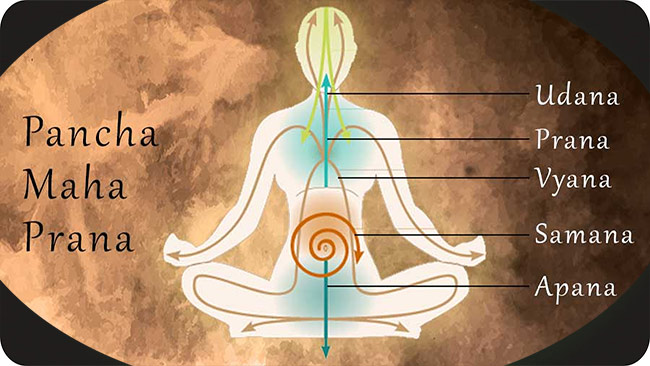In yoga and Ayurveda, the concept of “Pancha Pranas” refers to the five vital life forces or energies that are responsible for various physiological functions in the body. These pranas are believed to circulate within the subtle energy channels, or nadis, and play a crucial role in maintaining overall health and well-being. The Pancha Pranas are:
- Prana (Inward Moving Energy):
- Location: Center of the chest, extending from the throat to the diaphragm.
- Function: Responsible for the breath and the intake of oxygen; governs the intake of sensory impressions.
- Apana (Outward Moving Energy):
- Location: Lower abdomen, below the navel.
- Function: Governs elimination, both physical (excretion) and mental (letting go of emotions).
- Samana (Balancing Energy):
- Location: Navel region.
- Function: Assimilates and distributes nutrients from food, governs digestion and assimilation.
- Udana (Upward Moving Energy):
- Location: Throat and head region.
- Function: Responsible for speech, expression, and the upward flow of energy; associated with willpower.
- Vyana (Circulatory Energy):
- Location: Throughout the entire body.
- Function: Governs the circulation of blood and energy throughout the body, coordinating the movements of the other pranas.
The balance and harmonious flow of these pranas are considered essential for maintaining physical and mental health. Imbalances or blockages in the flow of these vital energies are thought to lead to various health issues, both physical and mental.
Pranayama, which involves conscious control and regulation of the breath, is a key aspect of yoga practice aimed at balancing and harmonizing the Pancha Pranas. Regular practice of pranayama is believed to enhance the flow of vital energy, promoting health, vitality, and spiritual well-being.
Alternate Nostril Breathing (Nadi Shodhana Pranayama) – Part 1
Benefits Of Slow And Deep Breathing & The Breathing Capacity Of A Person

